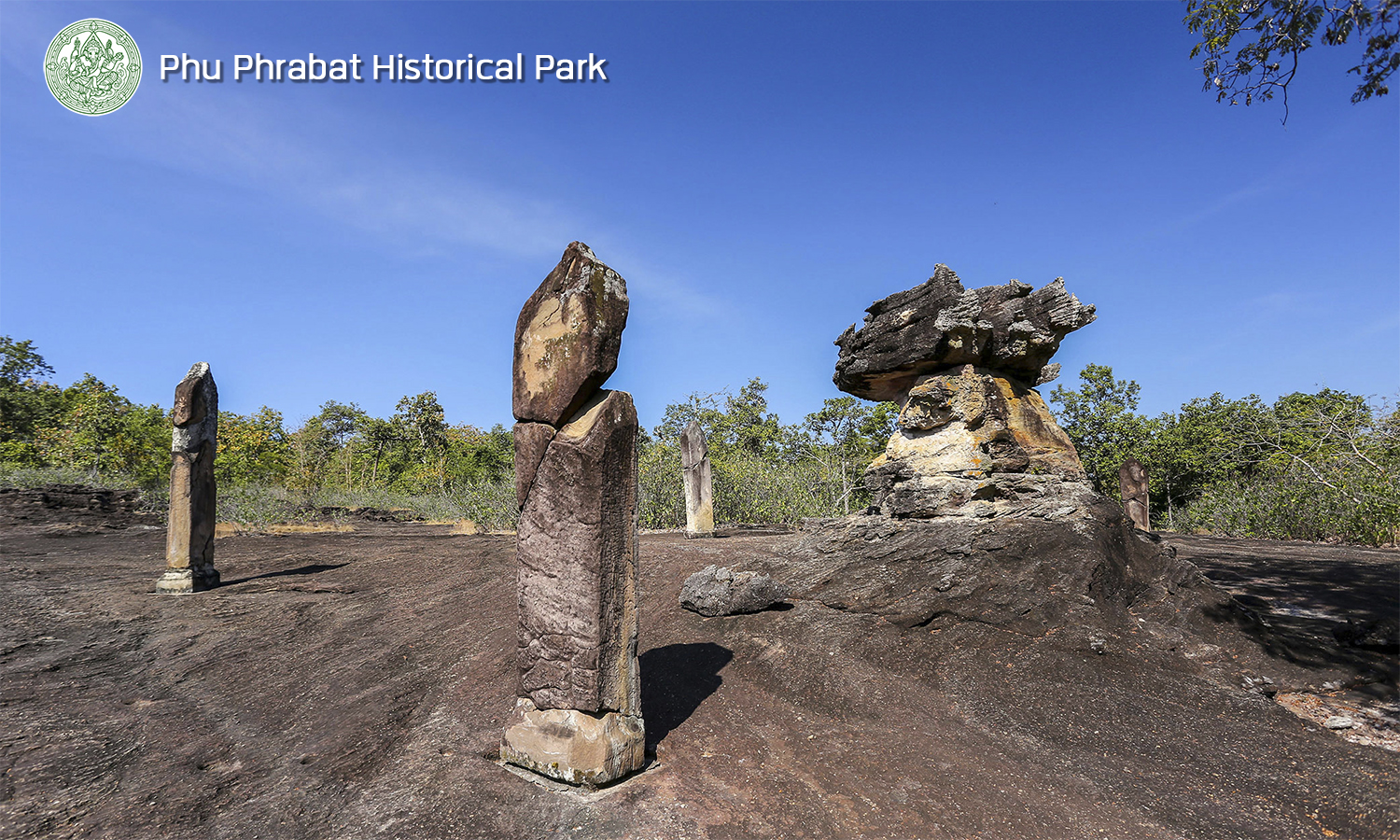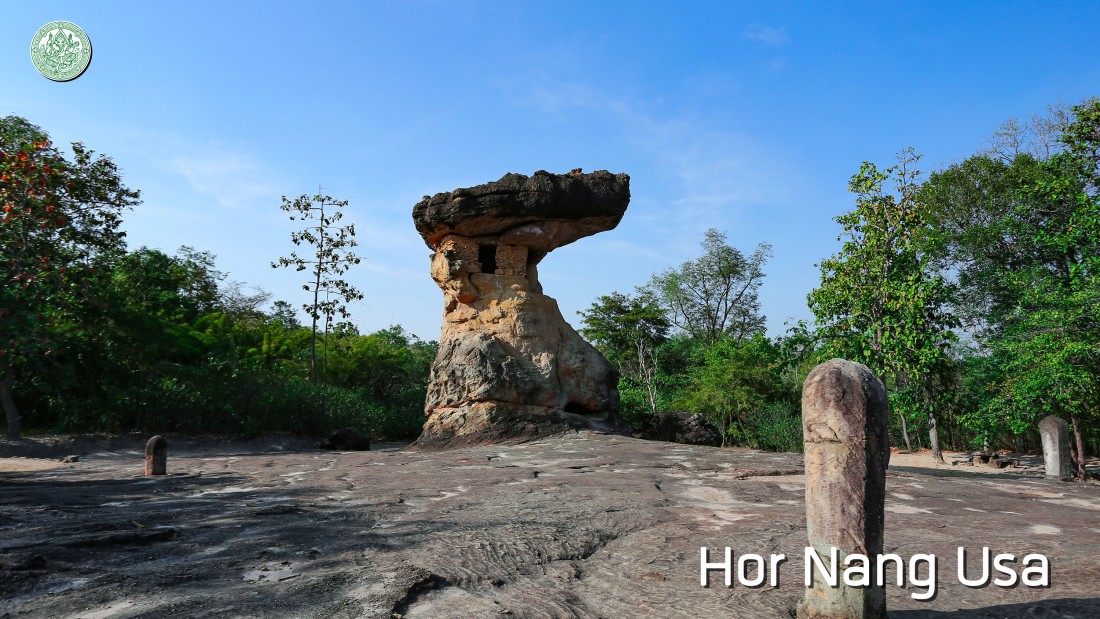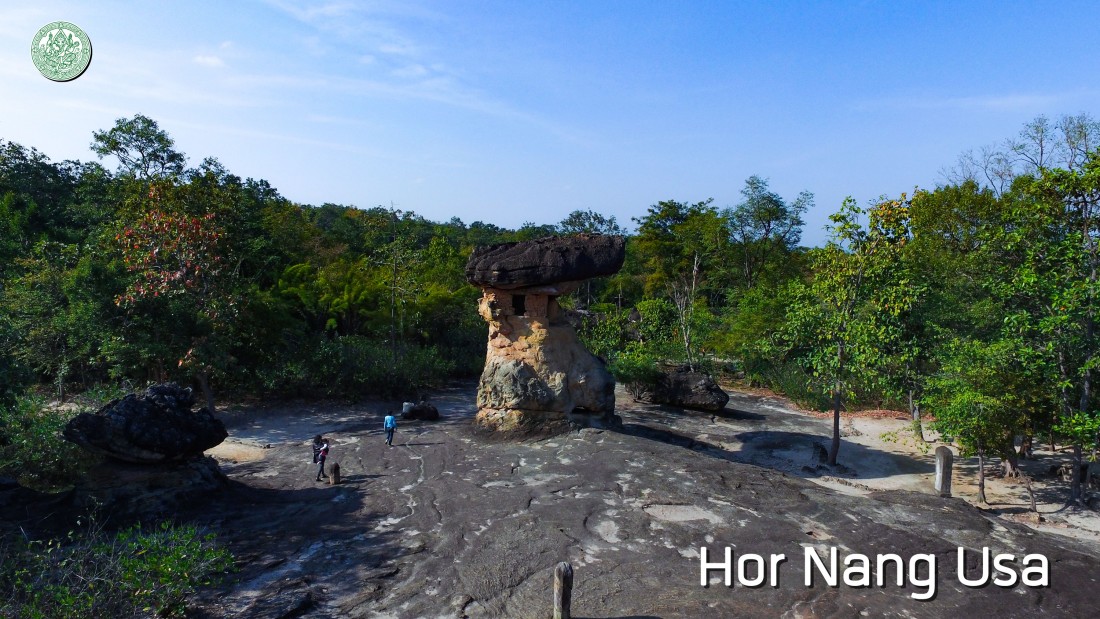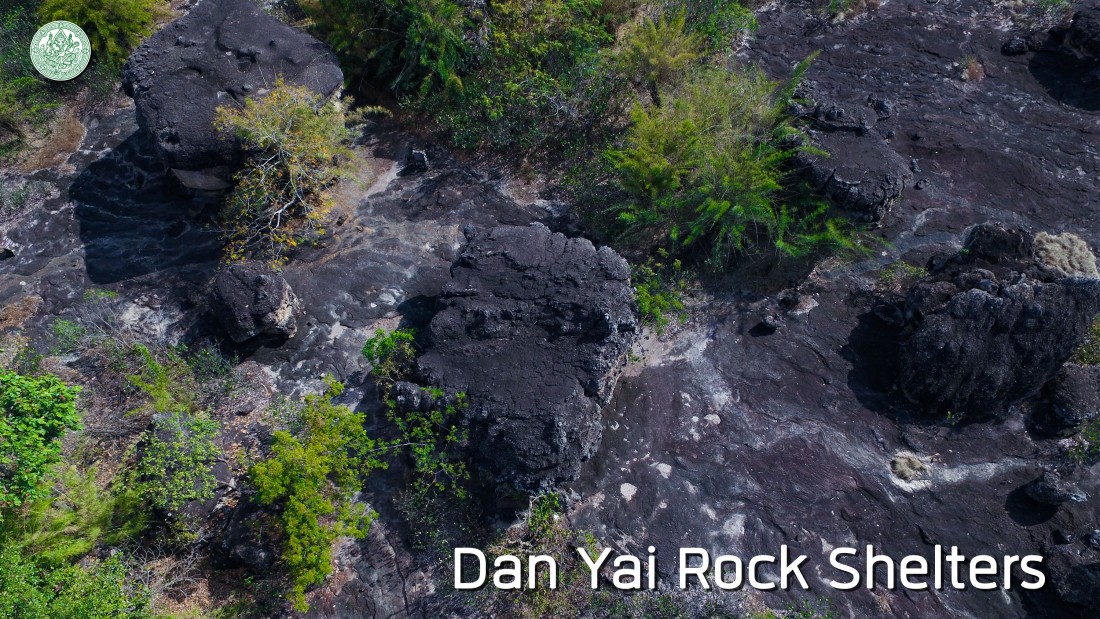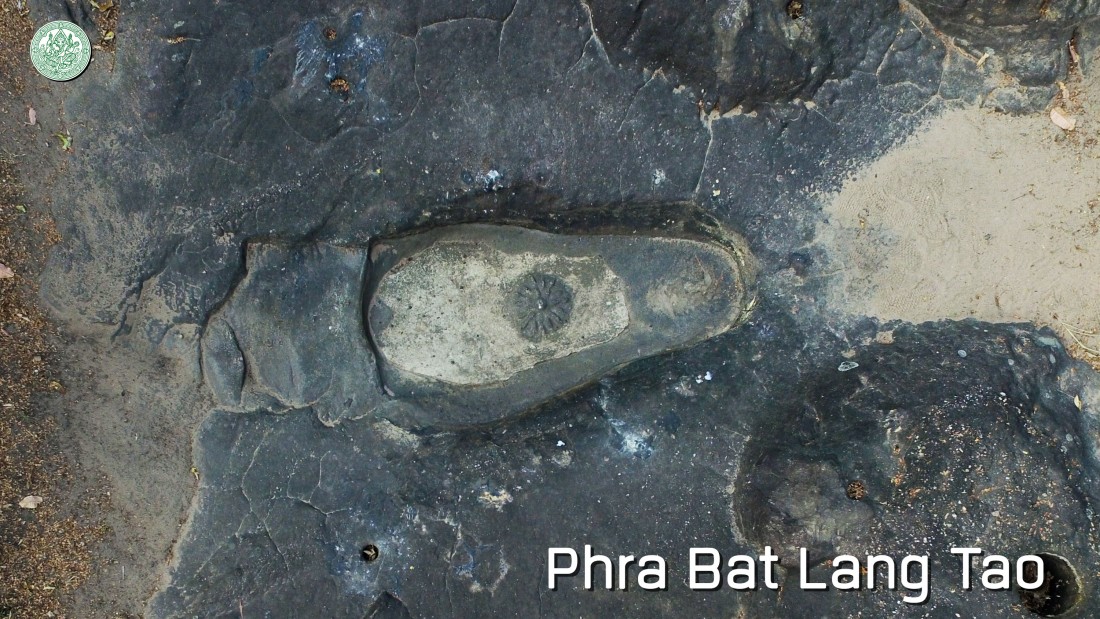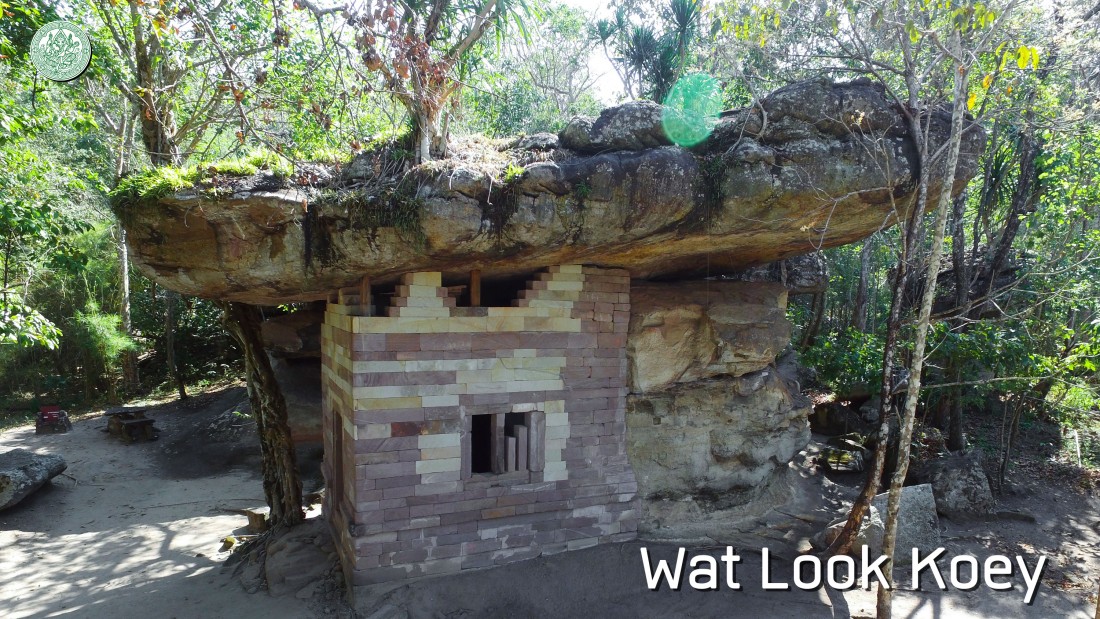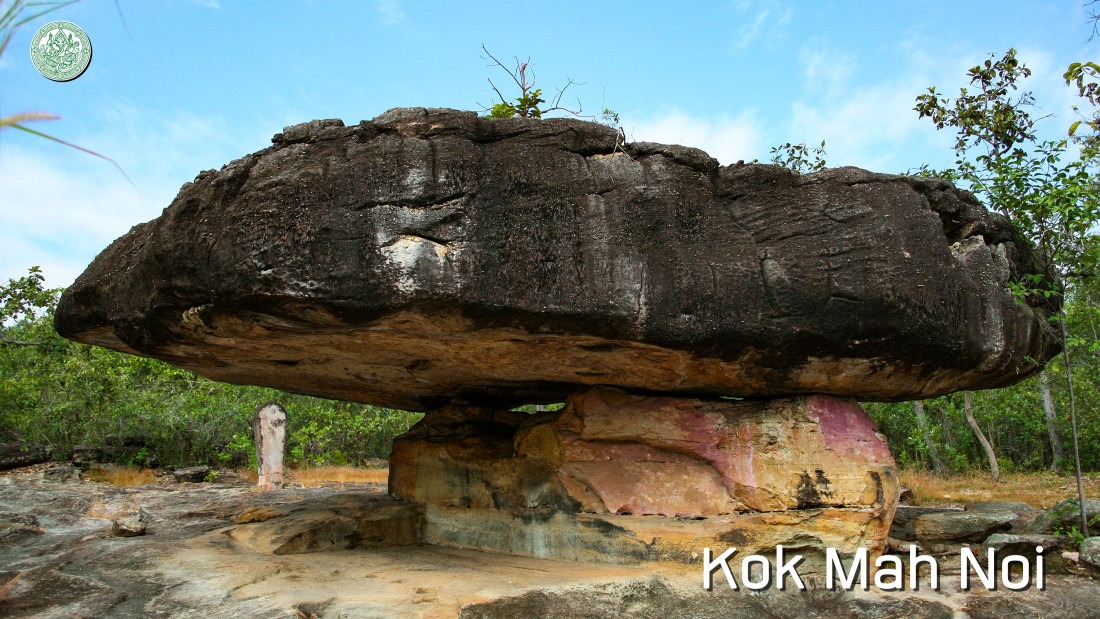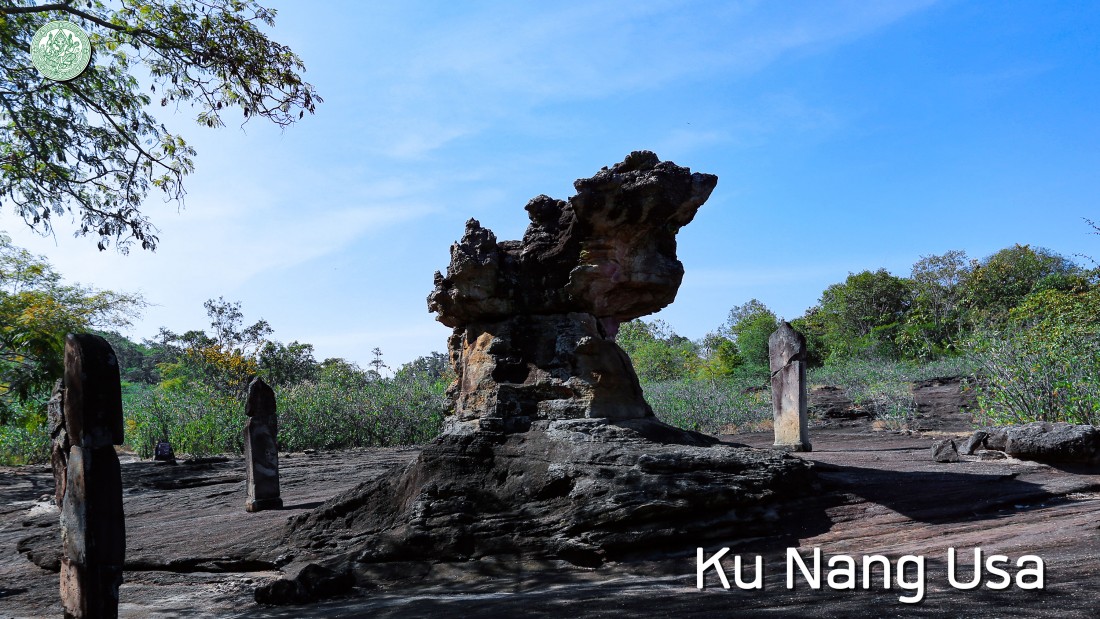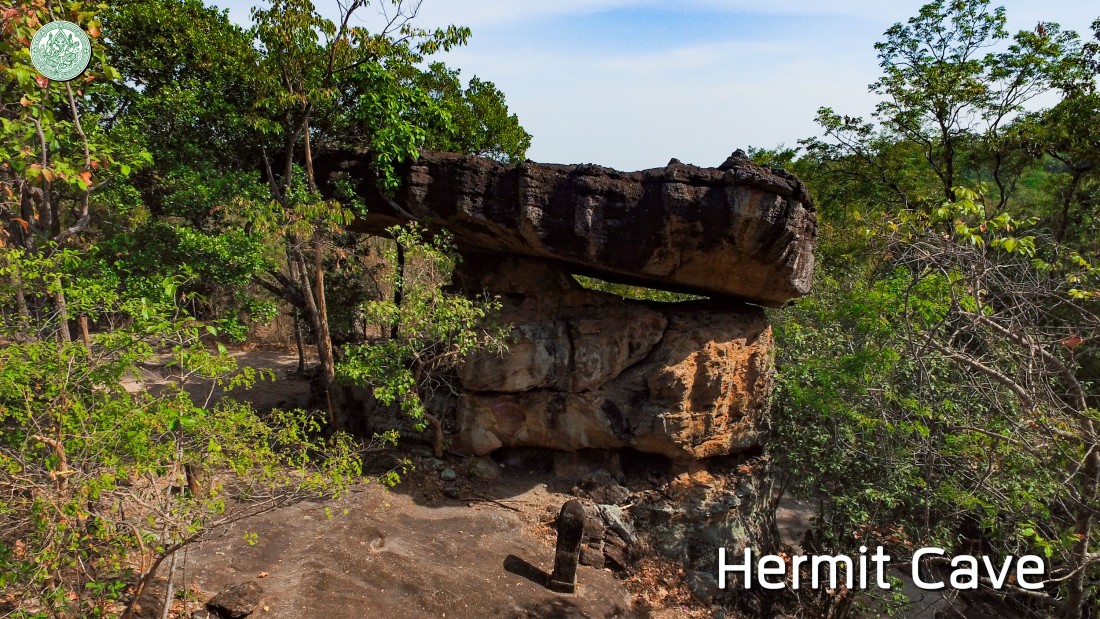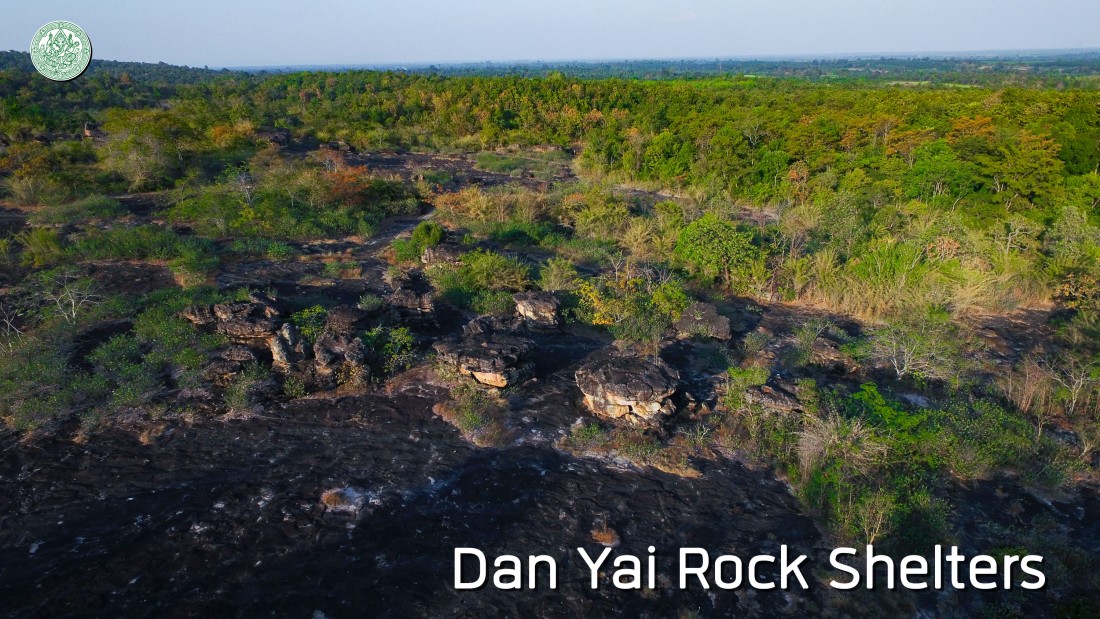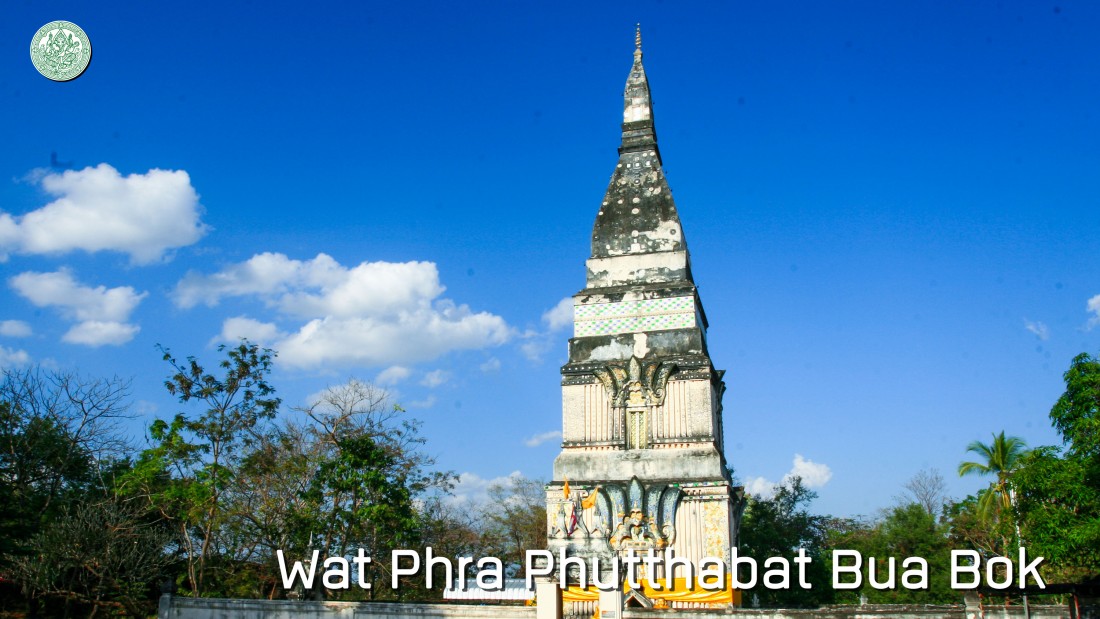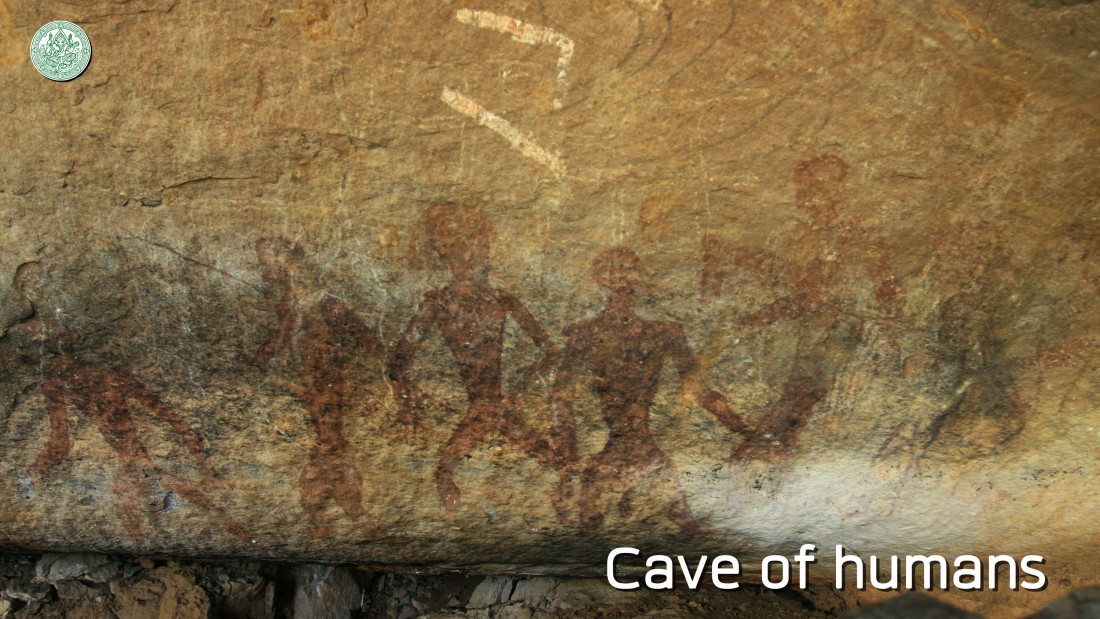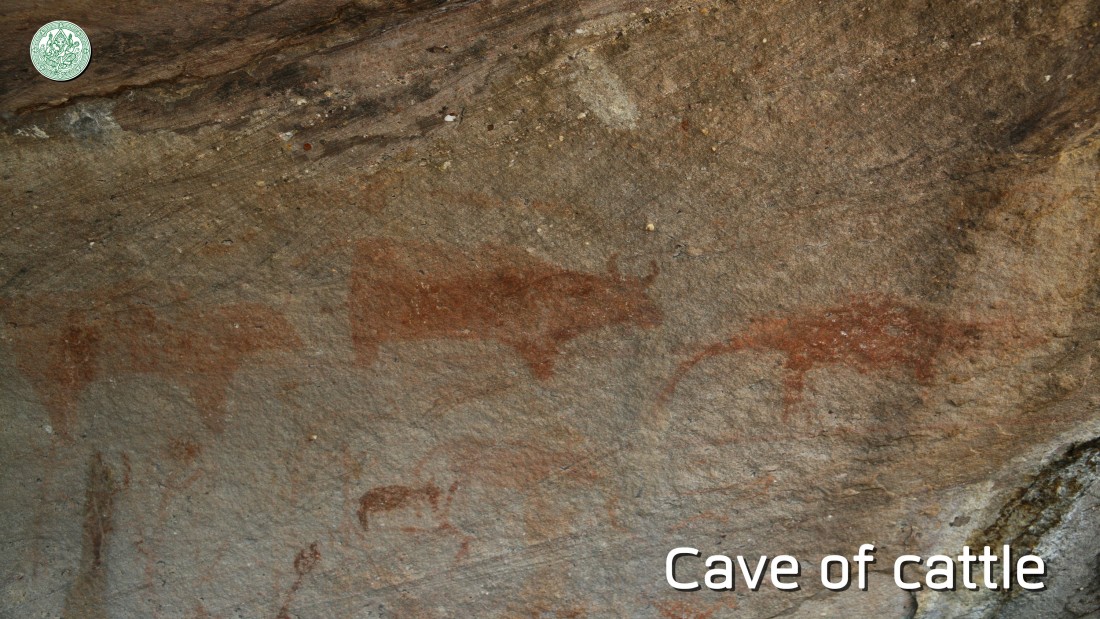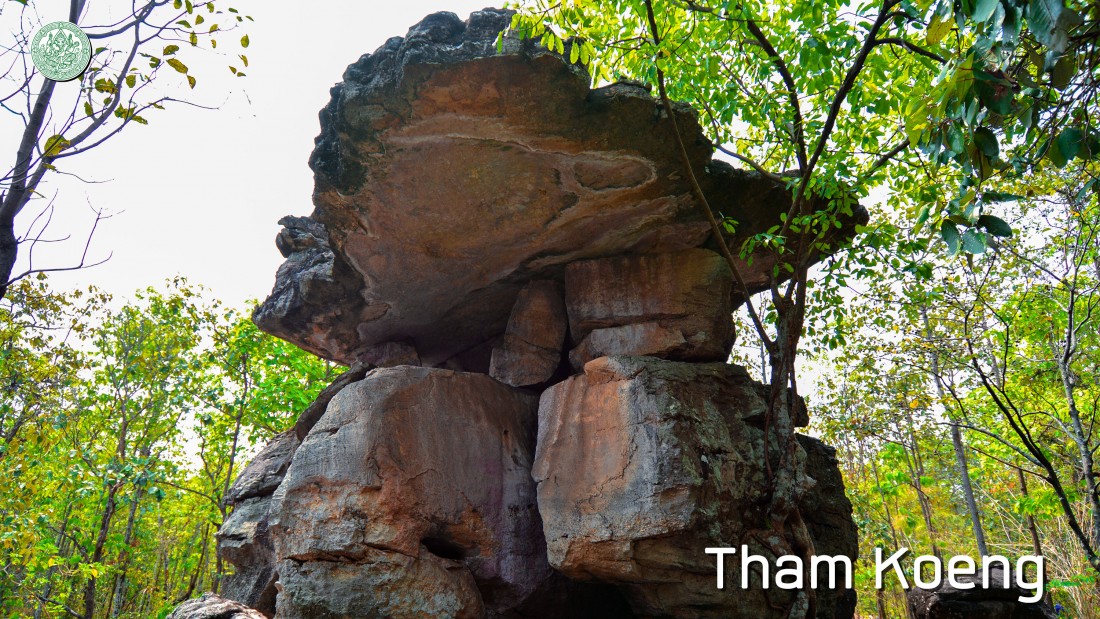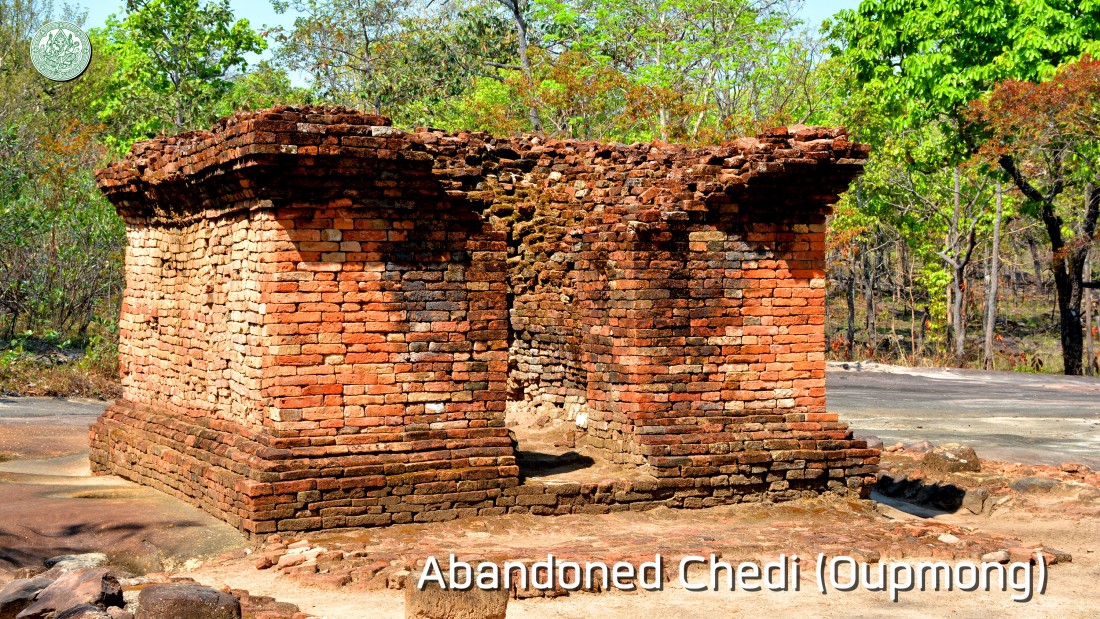Historical Background and Importance
|
In 1935, the Office of the Royal Society has officially registered the remaining numbers of the national historical sites in the Government Gazette, Volume 52, section 75, dated on March 8th, 1935. At that time, it was known as Phra Puttha Bat Buabok in Ban Phue District of Mueang Pan Sub-district. In 1973 - 1974, a group of archeological explorers of Pa Mong Project under National Energy Office has come to inspect archaeological sites at the reservoir construction of Pa Mong dam and also other sources of the prehistoric art paintings. Some sites have been already viewed by the 7th Reginonal Office of Fine Arts, Khon Kaen. In April 28, 1981, the Fine Arts Department has made the official registration to zone the ancient ruins in the Government Gazette, Volume 98, section 63. The mention from the page 1214 referred that Phra Puttha Bat Buabok at Phu Phra Bat possessed 30,500 square kilometers of area which did not match the truth. By the way, the truth is about 5,488 square kilometers of area. By 1988, Dr. Suwit Ratsaniphoom, Deputy Director General of the Fine Arts Department at that time, has thought about promoting Phra Puttha Bat to be a historical park because of many sides of readiness. For example, tons of protected prehistoric and historic ruins, woods richness, natural occurring rock formations. The project of Phu Phra Bat historical park has been firstly run in 1989 under the responsibilities by 7th Reginonal Office of Fine Arts, Khon Kaen which were to create the project plans and provide budgets for archeological evidence conservation and facility improvement. The Fine Arts Department has invited Her Royal Highness Princess Maha Chakri Sirindhorn to the official opening ceremony of Phu Phra Bat historical park in June 26th, 1992. |
|
Location Phu Phra Bat historical park is located on a mountain called Phu Phra Bat in Mueang Pan area, Ban Phue District, Udon Thani Provinc which is a part of sandstone mountains of Phu Phan on the west side of Udon Thani Province and 320 – 350 meters high above the mean sea level on the average. However, the overview landscape is generally sparse forest and covered by the traditional plants of hardwood trees. Phu Phra Bat historical park currently becomes a division under the 8th Regional Office, Khon Kaen of the Fine Arts Department which belongs to Ministry of Culture. As the past missions, 78 historical sites in the responsible regions have been already protected. Their main responsibilities are maintaining, conserving, developing and researching about historical sites and antiques in the historical park as well as nearby area. Also it is opened as a tourist attraction and cultural learning center for general people. Phu Phra Bat historical park is highlighted in making the difference from others for most ruins occurred by nature and it caused the landform changes. Then prehistoric humans adapted them to integrate with cultures in each period. |
|
Geology on Phu Phra Bat The geology on Phu Phra Bat is considered as a kind of Phu Phan formation of Khorat unit, the non-marine red beds of Mesozoic Era. The age can be described as the late Triassic period (245 – 208 million years) – Cretaceous period (146 – 65 million years) extended to Tertiary period in Cenozoic Era (65 – 5 million years). This sandstone layer is on the surface of the rock from the early Paleozoic Era (286 – 245 million years). The origin of many rock shelters found in Phu Phra Bat historical park is formed by the different level of durability to natural erosion in each sandstone layer. On the middle layer, soft sandstones with low density of mineral crystal were contained. Accordingly, it was easier to cause an erosion than the upper and the lower ones which consisted the higher density by a solid mix of sandstones and conglomerates. This resulted in occurring inward-curving on the rock shelters in the shape of mushrooms or erosive outputs of the corner columns which were bringing similar looks of the stone tables. Also, they became the extraordinary sculptures of natural occurring rock formations as if those rocks had been put down by humans. The geological phenomenon like this can be seen in not only Phu Phra Bat historical park, but also many places in northeast Thailand. For example, Phuphaterb in Mukdahan Province, Sao Chaliang in Ubon Ratchathani and Khao Chan Ngam Temple Nakhon Ratchasima Province. |
|
Discovered Civilization in Phu Phra Bat Historical Park Prehistoric Period Going into the deep studying in details of paintings can lead to some points of the archeologists that the prehistoric art paintings found in Thailand have shown the images of wildlife gathering, hunting and farming for living. So they probably happened in 3,000 – 2,500 years ago when the early generation of farming and inventing the metal-glass tools were begun by humans. The prehistoric art paintings found in Phu Phra Bat are both monochrome artworks painted in red and polychromes which are in red, white and yellow. The paintings can be classified into 2 types as the followings. 1. Virtual paintings (Humans, animals, plants and things) 2. Abstract paintings (Symbols and geometry) The colors for paintings were assumed to be from the natural materials such as red ochre or Hematite by mixing them with gluey liquid like gum so that they can be used for long-lasting paintings on the rock shelters. |
|
Historic Period Around 12th – 16th Buddhist century or 1400 – 1000 years ago, Dvaravati cultures as well as Buddhism beliefs from central Thailand has been spread out to Phu Phra Bat and they resulted in several Buddhism constructions. For instance, the rock shelter decoration or adaptation for religious places as they were surrounded by sandstone boundary markers (Sema stones). Around 15th -18th century of Buddhism, the influence of Khmer arts in northeastern Thailand has played an important role in this area as the discovered petroglyphs of Bodhisattva at the cave of Buddha images, Khmer architectures in Wat Phra Puttabart Buabarn temple and Wat Non Sila Art temple which are nearby Phu Phra Bat. Also the engraving works of the lord Buddha's history and Jataka tales were patterned on the sandstone boundary markers conforming to Khmer Arts. Around 22nd – 23rd Buddhist century after Dvaravati and Khmer cultures were gone, they were replaced with Lan Chang culture at Phu Phra Bat. As the evidences of Buddha statues were found just like the ones in Phra Siang cave and the architectural evidences were found in Wat Lukkhoey temple. |
|
“Usa – Baros” Folktale “Usa – Baros” folktale has been picked up for its characters to name the ancient ruins in Phu Phra Bat by local people. Therefore, it is necessary to know about this folktale before visiting the ruins in Phu Phra Bat to understand the origin of those names as well as learn local people’s beliefs. The tale is about a love story that is not a happy ending between Nang Usa, a daughter of Thao Kong Pan, and Thao Baros, a son of Pa Ko Wiang Ngua governor. This story began with a speculation of seeking a partner by Nang Usa. She made a swan garland and floated it on the river. Then Thao Baros grabbed it and sought out the speculator until he came to Mueang Pan town. Then he met Nang Usa and they fell in love with each other. Suddenly Thao Kong Pan knew about this, he played a trick by challenging him in a one-day temple construction. The loser has got to die. Thao Baros’s team was disadvantaged in the numbers of builders. So he played a trick of hanging the lamps on the top of the trees in order to persuade Thao Kong Pan’s team to think of the early morning time. So the temple building game was then stopped as they were defeated at the end and got beheaded. After that Nang Usa moved in and lived with Thao Baros in Pa Ko Wiang Ngua town but she cannot stand being teased and then she moved back Mueang Pan town at the same time that Thao Baros performed religious practices in the woods alone. Thao Baros knew what happened with Nang Usa later. He then went to Mueang Pan town to look for her but he finally found out that she already died because of the hurt feelings. He was also sad a lot and died by the hurt feelings of her as well. |


